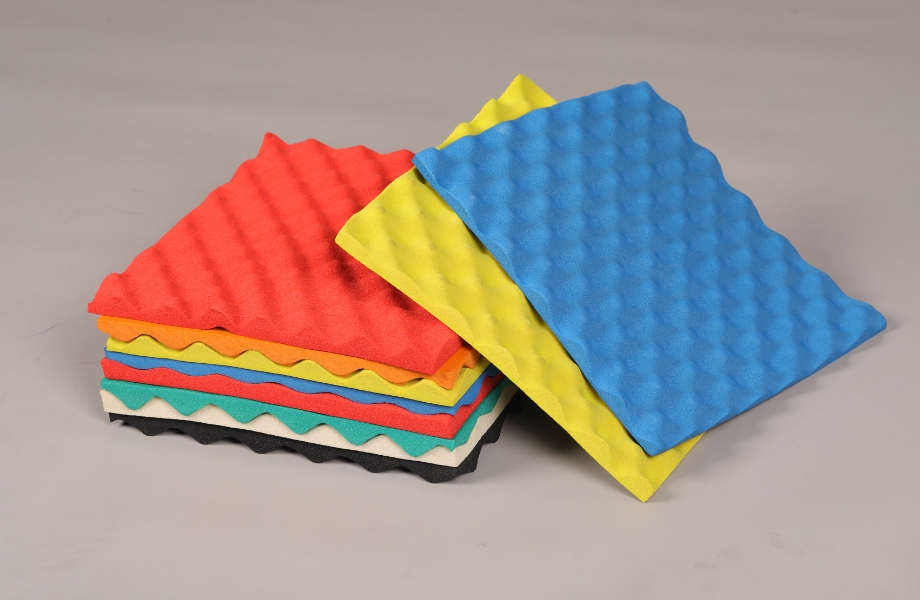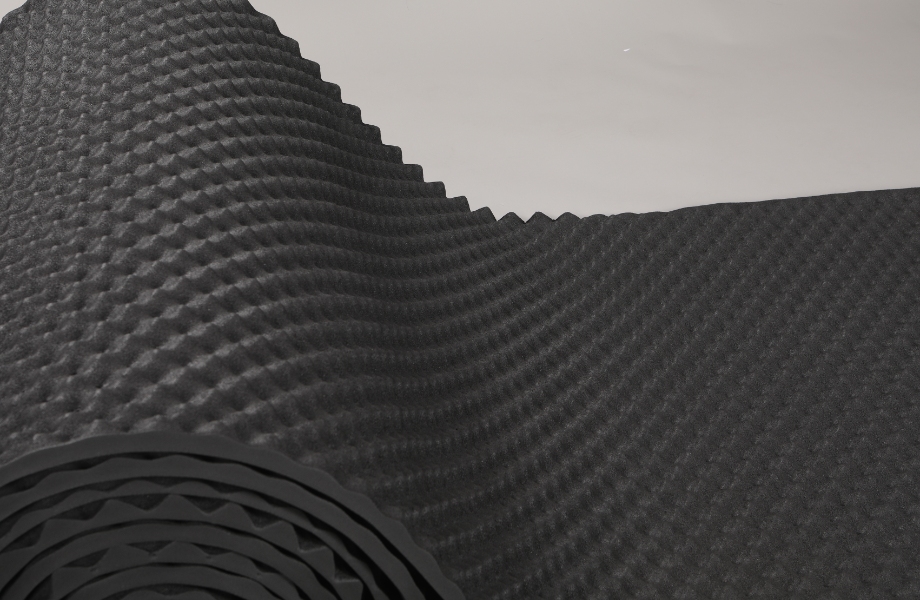E-mail: marketing@hbhuamei.com
Noise (nuisance) is the number one complaint of every third homeowner. If you’re losing sleep, productivity, and/or peace of mind due to unwanted noise, sound insulation foam could be your answer. When installed correctly, this specialized building material can cut noise transfer by up to 70%. The question isn’t whether it works- it does, but rather if it is worth the cost based on your circumstances.
Most sound insulation projects “pay off” as quality of life improvements, with 85% of sound insulation users being satisfied with their results. Sound insulation board products will vary significantly by price and performance, typically between $2 and $ 10 per square foot.
Let’s look at the hype and marketing to help you decide if sound insulation is worth your money, depending on your noise problems, budget, and property.

Sound insulation foam is a term used to describe specialized materials used to limit noise transfer between spaces. Sound absorption is typically used to reduce echo within a room. Effective sound insulation board products offer a barrier to prevent sound waves from travelling through floors, walls and ceilings. These products do this by utilizing some form of dense, rubber-based materials that dampen vibration and airborne noise.
Sound travels from the source as waves through air and solid materials. Effective insulation works in two ways:
1. Mass and density- the heavier and denser a material is, the more sound waves will be blocked as the sound waves attempt to pass through.
2. Decoupling: Separating surfaces stops vibration transmission
Quality sound insulation products successfully combine both principles while maximizing the reduction of noise transmission. Vibration-damping products made from rubber-based foam can store a great deal of mass while also damping vibrations and act as a great barrier to sound transmission.
The primary benefit of sound insulation foam is its ability to prevent noise transmission. Products with professional-grade performance may have territorial ratings that will reduce the noise of products by 20 or 40 decibels. Either way this is a massive reduction in sound level to the order of about one-quarter to one-sixteenth the original loudness level.
For reference:
● A 10-decibel reduction cuts the perceived level by half
● A 20-decibel reduction cuts the perceived level to one-fourth
● A 30-decibel reduction cuts it to one-eighth
Sound insulation will provide several improvements to the quality of life, including the following:
● Better sleep for example - be less woken up at night from external sources like traffic, neighbours, or household members
● Improved focus - fewer distractions while working or studying from home
● Improved privacy - no sound will leak so conversations cannot be heard
● Less stress - studies show that reducing background noise reduces stress levels by reducing stress hormones
The interesting thing is that many people don’t recognize the fact that these sound-damping materials often serve as thermal insulation in an attic or acoustic insulation in a wall. This means consideration of energy efficiency will also lead to savings in either:
● Lower heating and cooling costs,
● Reduced energy consumption,
● More stable temperatures indoors, and
● Possible 5-15% savings on utility bills.

Sound insulation foam is particularly useful for a number of sound-damping applications in homes. For instance, the following products are the most common for sound-damping insulations:
Sound insulation, or soundproofing as it is referred to in residential application, can be used in many types of locations, including:
1. Party walls - the shared wall between a pair of apartment units, or between paired townhomes
2. Home theaters - where limit noise generated by your entertainment system is kept down,
3. Bedrooms - where a calmer sleeping environment is desired
4. Home offices - where a professional working environment is created
5. Basements - converting non-finished space to usable
Sound insulation is often used in commercial venues, including:
1. Recording Studios - to help create a professional level of ambiance,
2. Conference Rooms - for private meetings,
3. Medical Facilities - concerning patient privacy,
4. Educational Facilities - to help improve focus for learning,
5. Restaurants/Hotels - to increase customer comfort,
The cost range for sound insulation can vary widely based on a number of factors, including:
● Material quality - foam, professional rubber based materials
● Space cost - a general cost of $2-$10 per square foot.
● Level of labor difficulty - home improvement do-it-yourself vs contractor professional installation
● Other construction involved to install - some of the options require a change to the construction of the building.
In a room of average size (say 12’ x 12’), expect total costs, based on the above factors, to land from $500-$3000.
If you are considering will the cost of sound insulation foam be worth it, let’s consider:
1. Value on your property - sound insulated monitored areas do tend to have greater value on resale.
2. Energy savings- If you heat/cool that location, you should see a reduction, and that will always help to offset your original costs.
3. Gain back time- waiting important time concentrating in your space to work from home.
4. Health benefits- better sleep and reduced stress are priceless benefits to your health.
Sound insulation is a capital improvement (as opposed to a short-term solution). It is unlike an electronic noise-masking solution that needs continuous electricity and, eventually, will require replacing. Quality sound insulation materials, installed correctly, can last a generation without ongoing expense.
To all you DIY people out there:
● Pros: You have a lower out-of-pocket cost and you can do it at your convenience
● Cons: It may not be as successful, may not get done quickly, or may not be done correctly
If you are considering professional installed insulation, you may have the advantage of:
● Professional evaluation: finding all of the sound pathways is not easy.
● Proper material choices: can use materials that deal with various sound issues.
● Proper installation: i.e., seal all the proper gaps and intersections.
● Timely installation: installation can get done quickly.
● Guaranteed installation: usually provide warranties for installation as well.
There are a number of material selection issues to consider, but some considerations include:
1. Density: Denser is generally preferred for blocking sound.
2. Thickness: Thicker is generally preferred; however if something is too effective, you have less room to install it (bigger is not always better).
3. Sound Transmission Class (STC): higher is better.
4. Fire Rated: make sure, at least, meet your local requirements.
5. Had environmental issues: total emissions of VOCs and sustainability features
Situations are different so solutions will vary.
● Airborne noise: talking, television sounds e.g., mass loaded vinyl, dense rubber foam.
● Impact noise: footsteps, dropped objects e.g., decoupling materials and underlays provide good solutions.
● Mechanical noise: HVACs, appliances e.g., masses, damping and isolation.
Of course, the professional installations always have one thing in common… each measure significant noise reductions.
● Multi-family housing: Residents reported a 70-80% reduction in noise, effectively sustained when the walls were properly sound insulated .
● Home theaters: Sound transmission to adjacent areas reduced > 90%.
● Urban apartments: Street noise reduction from treated walls and windows usually between 50-70%.
Survey data reports:
● 85% of home owners claimed they were satisfied with the results of the professional sound insulation projects
● 92% of respondents (home owners) would recommend sound insulation to friends/family if they had a noise issue
● 78% of home owners said they wished they had installed sound insulation sooner if they only knew.
As for most people who are trying to manage annoying disruptive noise, for the most part, buying sound insulation foam is typically a good option. There are benefits upfront immediate noise and other reductions, followed by medium-term improvements to quality-of-life, long-term improvements to energy efficiency, and long-term add-value to their property. There often enough benefits to make the initial expense less troublesome.
To maximize the long-term value of sound insulation foam comes from wisely choosing satisfactory materials for your application optimally installed by professional installers. If you choose to install it yourself, sometimes it works for smaller noise issues. However, if you have have a professional assess your noise issue, knowing the proper application of well installed room dampening foam gives you the peace of mind of sometimes obtaining the best results for the greatest noise issues.
If you are living / working with disruptive noise all the time, however, then purchasing high-quality sound insulation products from a reputable manufacturer is an easy decision and it will contribute to being less disruptive for a measurable future period of time.
Copyright © Huamei Energy-saving Technology Group Co., Ltd. All Rights Reserved | Sitemap | Privacy Policy
Insulation solutions LIST: Insulation solutions LIST